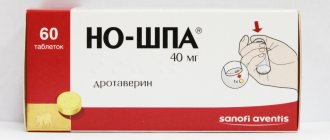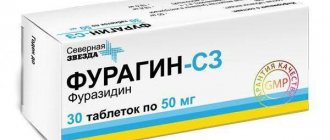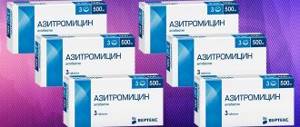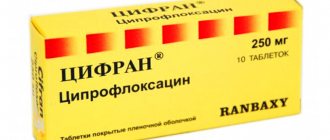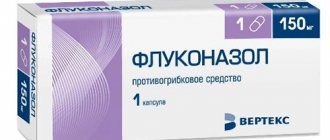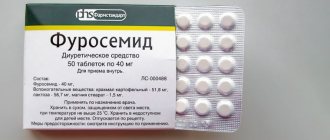Among all infectious and inflammatory pathologies of the urinary system, cystitis occupies a leading position. Women are more susceptible to this disease. This injustice is due to the anatomical features of the female body. In the fairer sex, the ureters are several times shorter and wider than in men, which facilitates the rapid penetration of pathogenic microflora into the body. The main causative agent of this disease is bacterial microflora. It is for this reason that an antibacterial drug must be included in the complex therapy of cystitis. This group of drugs is also called uroseptics. Among a wide range of drugs, Flemoxin has shown good therapeutic properties for cystitis.
About the medicine
The original Dutch drug Flemoxin Solutab is based on the famous antibiotic amoxicillin. This is a semi-synthetic penicillin.
The drug has a number of advantages:
- Unique dosage form (dispersible tablets).
- High bioavailability.
- Good absorption in the intestine (absorbed almost completely). Interestingly, food intake has virtually no effect on the process of drug absorption;
- Wide spectrum of antimicrobial activity. It affects gram-positive aerobes (staphylo- and streptococci), gram-negative anaerobes (some species of Neisseria, Shigella, Salmonella, Escherichia coli and Klebsiella) and a number of other pathogenic bacteria.
Important! Amoxicillin in therapeutic doses penetrates the mucous membranes, including the urinary system. This allows the drug to be used for the treatment of cystitis.
The uniqueness of the tablets is not only that they easily dissolve in water and can be taken by a child, an elderly person, or a seriously ill person who finds it difficult to swallow a tablet. But also that the tablet itself consists of acid-resistant microgranules. Microscopic spherical particles of the drug are not destroyed by digestive juices. And they penetrate the intestines, where they are quickly absorbed.
More often, this drug is prescribed for ENT pathology, soft tissue diseases and gastritis associated with Helicobacter pylori (in combination with Metronidazole). But since it is also active against many microorganisms that cause cystitis, it can be recommended after urine culture and for the treatment of this disease.
Analogs
Flemoxin analogues have a similar composition and differ in a similar principle of action. These drugs include:
- Amoxil,
- Amosin,
- Ecoball,
- Ospamox,
- Gramox-D,
- Iramox,
- E-Mox.
Flemoxin Solutab is a broad-spectrum antibiotic. This is an effective remedy for the treatment of cystitis in children and pregnant women. Despite this, we should not forget that only the attending physician can prescribe the drug based on the examination.
About the disease
Cystitis is an inflammatory process affecting the walls of the bladder, which leads to frequent and painful voiding (urination) and a false urge to go to the toilet. In this case, urine is excreted in small portions, and in patients with an acute form of the disease, the temperature may rise to low-grade levels (37.1-38°C).
Cystitis is caused by:
- bacteria (staphylococcus, Escherichia coli and Pseudomonas aeruginosa, Klebsiella and Proteus);
- viruses;
- fungi;
- protozoa (chlamydia, trichomonas, mycoplasma).
Most often, the cause of the disease is opportunistic bacteria. In women, the disease occurs more often than in men due to anatomical features (wide opening to the urethra and short urethral tract).
Normally, when a small number of microorganisms enter the urethra and even the bladder, the barrier properties of the mucous membrane of the organ are sufficient to suppress the activity of bacteria. But with hypothermia, stress, and other infections (especially STDs), the barrier properties of the lining of the bladder decrease, and microorganisms begin to grow uncontrollably.
In girls, due to an unformed hormonal system, the barrier properties of the mucous membrane are weak, and since the urethra is short and wide, bacteria easily penetrate the bladder. Therefore, cystitis occurs more often in girls than in boys. And sometimes simply because of non-compliance with basic hygiene rules. In men, cystitis often accompanies prostatitis, in women - bacvaginosis.
special instructions
In order not to harm your body, you need to take something into account when taking this antibiotic:
- With long-term use of the drug, for example, for the treatment of chronic forms of diseases, you need to carefully monitor the composition of the blood and urine in the laboratory, as well as monitor the condition of the kidneys and liver.
- If the patient's body has many bacteria resistant to amoxicillin, then taking the drug can lead to superinfection. In this case, you need to choose a more appropriate remedy.
- If kidney function is impaired, the doctor prescribes a smaller amount of the drug, since it is eliminated much longer.
- The antibiotic not only has a destructive effect on pathogenic microorganisms, but also aggravates the condition of the intestinal microflora, and also slows down the production of vitamin K.
- When taking the drug simultaneously with antacids, laxatives and glucosamine, a decrease in the therapeutic effect is observed.
- But it increases the absorption of digoxin by the body.
- A deterioration in the therapeutic effect is also observed when this drug is combined with sulfonamides.
- When combined with antibiotics of other pharmacological groups, an increase in their effect on the body is observed.
- During treatment, it is important for women to replace oral contraceptives with others, as their effectiveness from the antibiotic will decrease.
- If no improvement is noticed in the first three days of treatment, then you need to change the drug.
- Vitamin C can increase the rate at which medications are absorbed by the body.
Flemoxin and cystitis: when the drug works
In most cases, the cause of cystitis is the proliferation of Escherichia coli. And this microorganism, like Staphylococcus aureus (strains that do not produce β-lactamases), Proteus and Klebsiella (possible culprits of the disease) are sensitive to the described drug. In this case, with cystitis, Flemoxin is quite suitable and can be prescribed by a urologist.
The drug is not effective against bladder inflammation caused by fungi, viruses and strains of bacteria that are resistant to the drug. Microorganisms that produce β-lactamases (compounds that degrade penicillin) are insensitive to the drug:
- serratia;
- enterobacteria;
- indole-positive Proteus;
- Pseudomonas aeruginosa.
Possibility of administration to children and pregnant women
This antibacterial drug is widely used in pediatric practice due to its ease of use and wide spectrum of antibacterial action. The dose and duration of the therapeutic course are determined by the attending physician, taking into account the severity of the disease, the patient’s age and weight category.
As for the possible use of this medicine during pregnancy and lactation, it is worth noting that during this period it is better to refrain from taking synthetic antibacterial drugs. The drug of choice may be uroseptics of natural origin, for example Canephron. But in cases where the threat to the fetus and mother from pathogenic microflora is greater than from an antibiotic, then the use of Flemoxin Solutab is possible, but only under the close supervision of the attending physician and monitoring of laboratory parameters of blood and urine.
Rules of application
Cystitis should be treated with Flemoxin Solutab as prescribed by the attending physician and in the dose prescribed by him. Interestingly, the tablet can be taken in different ways:
- swallow and drink with water;
- chew and swallow without drinking;
- divide into several parts and drink;
- dissolve in water to form syrup (1 tablet/20 ml of liquid);
- dilute in 100 ml of water to form a suspension and then take.
The tablet has a pleasant, fruity taste, so children of any age take the medicine with pleasure. The original tablet is divided on one side by a longitudinal line (risk) for ease of separation. On the other side there is a digital engraving - this indicates the dose of the active ingredient contained in each tablet. Do not be confused, it is not the dose that is engraved on the tablets, but only its designation!
The manufacturer produces drugs in doses from 125 to 1000 mg:
- 125 mg is indicated by the number 231;
- 250 mg is coded under number 232;
- 500 mg is designated as 234;
- 1000 mg is written as 236.
The drug can be taken 2 or 3 times a day. For chronic infections and severe disease, you should prefer taking an antibiotic three times. For mild cystitis, it is enough to divide the daily dose of the medicine into 2 times.
The amount of medication taken will depend on the patient’s condition and the severity of the disease. For infants, including children under one year of age, the dose is calculated based on their body weight. The daily dose should not exceed 60 mg per 1 kg of weight. Prescribe 30-60 mg per 1 kg of child’s weight per day. This dose is divided into 2-3 doses.
For children older than one year and up to 3 years of age, a dosage of 250 mg per dose when taken twice a day and 125 mg per dose if the tablet is taken three times a day. Children aged 3-10 years are recommended to take Flemoxin 375 mg twice a day or 250 mg 3 times a day.
Important! Children over 10 years of age and adult patients are prescribed 500 mg 2-3 times a day or 750 mg 2 times a day or 375 mg three times a day. The dosage depends on the patient's condition.
The duration of treatment is also selected by the doctor. For mild cystitis, taking the medicine for 5 days is sufficient. For moderate inflammation of the bladder, it is better to treat for 7 days. After the clinical manifestations of the disease disappear, you need to take the medication for another 2 days.
Medicine for cystitis solutab
Flemoxin Solutab is a penicillin antibiotic. This is a semi-synthetic drug indicated for the treatment of a wide range of infections. On the recommendation of a doctor, Flemoxin Solutab can be taken for cystitis. Before prescribing the product, be sure to read the instructions.
The basic component of Flemoxin is amoxicillin. The excipients of the drug are microcrystalline and dispersible cellulose, crospovidone, and saccharin. Flemoxin also contains magnesium stearate, vanillin and flavors (lemon and tangerine).
The drug is available in the form of tablets of 125, 250 and 500 mg. Flemoxin tablets are oval in shape. Their color is white. Each tablet has a risk. On one side there is a designation in the form of a number, on the other - the manufacturer’s logo.
Flemoxin has a bactericidal effect. Due to its broad action, the drug is active against staphylococcus, streptococcus, E. coli, gonococcus, salmonella, and shigella. Also, the drug Flemoxin is effective in the treatment of infections caused by meningococcus, Proteus, and Haemophilus influenzae. The medicine is active against some strains of Klebsiella.
Important! Flemoxin is not effective in the treatment of infections caused by the activity of indole-positive proteins, enterobacteria, mycoplasmas, and pseudomonas.
The medicine is quickly absorbed from the gastrointestinal tract. The maximum concentration of Flemoxin is observed 60 minutes after its administration. Amoxicillin is highly resistant to the aggressive environment of the stomach. Flemoxin is excreted from the body through the kidneys.
The absorption of the drug is not affected by food intake. The active component of the product has good penetration into both mucous membranes and bone tissue.
Flemoxin is not prescribed for cystitis in women in the following cases:
- personal intolerance to the components of the medication;
- diseases of the gastrointestinal tract accompanied by diarrhea;
- lymphocytic leukemia;
- diathesis of an allergic nature;
- ARVI;
- renal failure;
- bronchial asthma;
- hay fever;
- Infectious mononucleosis;
- diseases of the nervous system.
It is not recommended to take Flemoxin Solutab during pregnancy and breastfeeding. The medicine can be prescribed to a pregnant woman only after consultation with a doctor and after determining the likely harm to the health of the unborn child. It is possible to use the medicine for cystitis by a nursing woman only after consultation with the attending physician and taking into account the risk to the health of the child.
If the medicine for cystitis is taken in combination with Metronidazole, then diseases associated with hematopoiesis are also contraindications.
If it is intended to use the medication for cystitis together with clavulanic acid, then liver pathologies are contraindications. These include jaundice.
A remedy for cystitis should be prescribed from the first days of infection due to the high risk of complications such as pyelonephritis. For mild cystitis, it is enough to take 250 mg of the medication twice a day. It is recommended to drink the drug half an hour before meals.
The total duration of therapy should be at least 5 days. It is not recommended to use the drug for cystitis for more than one week. For moderate forms of infection, it is necessary to take 250 mg of the drug three times a day.
If the disease develops in a severe form, it is necessary to take 1 g of the drug per day. It is recommended to divide the drug intake into three parts. If the infectious process develops again, it is necessary to take two 500 mg tablets three times a day (maximum 3 g per day).
Attention! In case of severe cystitis, in the first hours after its onset, simultaneous administration of 3 g of the drug is allowed.
The maximum dosage of Flemoxin should not be more than 2 g per day if the patient has anuria (pathological failure of urine to enter the bladder). For kidney pathologies, the dose of the drug should be reduced by 20-50%. The interval between taking tablets is at least 12 hours.
We advise you to read: Cat cystitis treatment with antibiotics
| Type of cystitis | Required dosage | Duration of therapy |
| Acute mild | 250 mg twice daily | 5 days |
| Acute moderate severity | 250 mg three times daily or 500 mg twice daily | 5-7 days |
| Acute in severe form | 3 g once in the first hours after the onset of infection, then 500 three times a day | During one week |
| Chronic, recurrent | Two 500 mg tablets three times a day | One week, if necessary, the reception is extended to 10-14 days |
The tablets can be either swallowed with water or chewed. It is allowed to dissolve the product in 20 ml of water and take it orally.
The use of Flemoxin for cystitis in women can lead to the following adverse reactions:
- nausea with vomiting;
- diarrhea;
- anxiety and irritability;
- loss of appetite;
- colitis in rare cases;
- taste disturbance;
- hives;
- inflammation of the oral mucosa;
- convulsions;
- sleep disturbance;
- headaches;
- increased heart rate;
- thrush in the mouth;
- vaginal candidiasis;
- joint pain;
- dizziness.
In case of an overdose of Flemoxin, diarrhea and nausea with vomiting are observed. If these symptoms occur, gastric lavage is required. The patient is prescribed enterosorbents, as well as saline laxatives.
During simultaneous therapy with Metronidazole, patients may experience constipation and anorexia. Abdominal pain is also likely. The occurrence of stomatitis is possible. In rare cases, hepatitis may develop.
When Flemoxin is combined with clavulanic acid, jaundice is likely to occur. Less commonly, the development of erythema and dermatitis is possible.
Important! Long-term use of Flemoxin in large dosages for cystitis can lead to depression, disturbances of consciousness, neuropathy, convulsions and frequent dizziness.
Flemoxin Solutab for cystitis in women can reduce the effect of contraceptives taken in tablet form. The medication also weakens the effect of taking drugs containing estrogen. The simultaneous use of amoxicillin and these drugs can cause sudden bleeding from the genitals in a woman.
Antibiotics from the group of aminoglycosides and cephalosporins enhance the effect of Flemoxin when taken together with it. At the same time, sulfonamides, macrolides and tetracyclines weaken the effect of the drug and increase the likelihood of developing side effects.
Non-steroidal anti-inflammatory drugs and diuretics, when taken together with Flemoxin, increase its content in the blood plasma. Phenylbutazone and Probenecid also increase the concentration of the drug in plasma. Aminoglycosides and laxatives reduce drug absorption. Antacids also have a similar effect. Deterioration in the absorption of the drug from the gastrointestinal tract is observed when taken simultaneously with Glucosamine. Ascorbic acid accelerates the absorption of Flemoxin.
The medicine is not recommended for use in patients suffering from allergic reactions. The instructions contain instructions not to take Flemoxin together with Metronidazole for patients under 18 years of age. It is also prohibited to use this combination of drugs for liver pathologies.
During treatment, the patient must abstain from alcohol. If severe diarrhea occurs, immediate cessation of use of Flemoxin is necessary.
Prescribing a drug to treat a bladder infection if a patient has infectious mononucleosis may cause the patient to develop non-allergic skin reactions (exanthema).
When using the medicine, you should also monitor your kidney and liver functions and follow a drinking regime, drinking up to three liters of water daily. If after three days there is no improvement in the patient’s well-being, then it is necessary to contact a specialist about replacing the medicine with another one.
Flemoxin can be replaced with Amoxicillin. The drug also has the following analogues:
- Amosin;
- Hiconcil;
- Augmentin;
- Amoxiclav;
- Flemoklav Solutab.
The latter drug, like Flemoxin, contains amoxicillin. But it also contains clavulanic acid. This component enhances the effect of amoxicillin, which allows the use of Flemoklav Solutab for cystitis more effectively. Flemoxin has no effect on bacteria that produce beta-lactamases. Flemoklav is effective against the specified type of microorganisms. This analogue has a more pronounced effect. The use of Flemoclav Solutab for cystitis allows the patient to quickly eliminate pain and inflammation of the bladder mucosa. At the same time, the medication contains more contraindications and has a wide list of possible side effects.
We advise you to read: How to treat cystitis after cesarean section
One of the indirect analogues of the drug is Unidox Solutab. This antibacterial agent belongs to the group of tetracyclines. Its active component is doxycycline. Like Flemoxin, one of the indications for the medicine is cystitis. At the same time, Unidox Solutab has a bacteriostatic effect, that is, it prevents the proliferation of bacteria, and Flemoxin completely destroys them. The first drug has a more extensive list of indications, but is less safe for the patient.
Flemoxin is an effective antibacterial drug with a wide spectrum of action. The instructions provide for the possibility of using Flemoxin for cystitis. The medicine can only be purchased with a doctor's prescription. Before prescribing it, consultation with a specialist is necessary.
source
Cystitis is the most common disease of the genitourinary system, which is most often observed in women. Typically, bladder inflammation is caused by a bacterial infection. In this case, be sure to take antibiotics, which include Flemoxin Solutab.
The active substance of the drug is amoxicillin. It belongs to the semi-synthetic penicillins, with a broad spectrum of action. When interacting with a bacterium, amoxicillin blocks the production of the enzyme transpeptidase, which is necessary for the construction of the cell wall of the microorganism, as a result of which the growth of the infectious agent is suspended and its subsequent death.
The antibiotic causes the death of the following aerobic gram-positive and gram-negative microorganisms:
- Staphylococci (with the exception of bacteria that synthesize penicillinase, an enzyme that destroys β-lactam antibiotics, which include penicillins, cephalosporins);
- Streptococci;
- Gonococci;
- Escherichia coli;
- Proteas;
- Salmonella;
- Shigella;
- Haemophilus influenzae;
- Klebsiella.
When administered orally, the antibiotic is quickly absorbed and distributed throughout all tissues and is not destroyed by hydrochloric acid of gastric juice. You can take it regardless of food, since food does not affect absorption. Excreted from the body in urine.
Most often, cystitis is caused by bacteria, but the following can also be pathogens:
If for cystitis provoked by viruses and helminths Flemoxin Solutab is simply useless: it simply does not work on them, then for a fungal infection it will also worsen the patient’s well-being, as it causes the progression of mycosis. In this case, they are treated without antibiotics.
But even if cystitis is bacterial in nature, it is worth considering that amoxicillin is inactive against:
- Microorganisms producing penicillinase;
- Indole-positive strains of Proteus;
- Enterobacteriaceae;
- Morganella blinka;
- Pseudomonas;
- Individual strains of Salmonella, Shigella, Klebsiella.
Therefore, it is so important to identify the causative agent of the infection; this can be done by passing urine for analysis.
The dosage of the drug is selected by the doctor taking into account the patient’s age, kidney function, and the severity of the infection. Flemoxin Solutab are dispersible (soluble) tablets, which makes them convenient to take:
- Children;
- Patients who cannot swallow regular tablets;
- Persons who do not have the opportunity to wash them down with water.
But the main difference from other soluble tablets of the dosage form made using the Solutab technology is that the active substance is enclosed in microspheres and tablets are formed from them.
In addition to the active filling, each microsphere contains an acid-resistant filler that protects the active substance from destruction by gastric juice and enzymes.
The antibiotic is released slowly and only in the alkaline environment of the duodenum, where it is maximally absorbed. Thanks to this technology, microorganisms slowly develop resistance to them.
The daily dosage in pediatrics is calculated based on the child’s weight and is 30-60 mcg/kg. It should be taken 2-3 times.
Tablets are prescribed in a dosage of 125 mg 3 times a day or 250 mg, but the frequency of administration is reduced to 2 times a day.
We advise you to read: Is it possible to take ciprofloxacin for cystitis?
The antibiotic is prescribed in a daily dosage of 750 mg, which must be taken in 2-3 doses.
Adult patients and children over 12 years of age.
It is prescribed in a daily dose of 1-1.5 g, in case of chronic infection the daily dosage is increased to 3 g, it must be taken 2-3 times.
For mild and severe disease, the course of treatment varies from 5 to 7 days, but if the infection is caused by group A streptococci, then the duration of therapy should be at least 10 days.
When the clinical manifestations of the disease disappear, the medicine must be taken until the end of the prescribed course. Take the tablets by swallowing whole, chewing or dissolving in a small volume of water (20 ml).
Review of other effective antibiotics, their differences and rules of administration.
While taking an antibiotic, undesirable effects may occur such as:
- Allergies, including conjunctivitis, rhinitis, urticaria, Quincke's edema and others;
- Dyspeptic disorders, namely nausea, vomiting, changes in taste, inflammation of the tongue and oral mucosa;
- Headache;
- Excitation;
- Convulsions;
- Sleep problems;
- Impaired consciousness;
- Vertigo;
- Disorders of the blood and cardiovascular system, such as rapid heartbeat, decreased number of platelets, leukocytes, neutrophils, increased eosinophils;
- Arthralgia;
- Pseudomembranous colitis;
- Dysbacteriosis;
- Oral thrush; women develop vaginal candidiasis.
If recommended doses are exceeded, undesirable reactions from the body intensify, and symptoms of general intoxication are observed. This condition is especially dangerous in children. To eliminate signs of poisoning, gastric lavage is performed, adsorbents (Smecta) and drugs that prevent dehydration of the body (Regidron) .
Medicines are not prescribed for intolerance to penicillins and cephalosporins. It is prescribed with caution to patients suffering from:
- Pathologies of the digestive tract (especially caused by taking antibiotics);
- Infectious mononucleosis;
- Leukemia;
- Kidney pathologies.
Amoxicillin can be used in women during pregnancy for health reasons. During lactation, it is advisable to switch the baby to formula, since the active substance passes into breast milk.
The medication should be stopped if signs of pseudomembranous colitis develop.
During long-term treatment, it is necessary to monitor the condition of the blood, liver and kidney function.
If there is no improvement in health, the antibiotic must be replaced 72 hours after starting treatment.
When taking the medication, intestinal flora is suppressed, which leads to a decrease in the production of vitamin K.
When taking amoxicillin, you must tell your doctor about all medications you are taking, as vitamin C increases its absorption. But antacids, glucosamine, laxatives and aminoglycosides reduce its absorption.
When administered in parallel, the effect of oral contraceptives is reduced, so during treatment it is necessary to use additional means of protection against unwanted pregnancy.
Flemoxin Solutab can be taken for cystitis only as prescribed by a doctor, since only a specialist can identify the pathogen and prescribe adequate treatment. Before contacting a doctor, you can take No-shpa, which will help relieve pain; if the temperature rises above 38 degrees, take antipyretic drugs (Panadol, Mig) .
Be sure to follow a drinking regime; you need to drink up to 3 liters of liquid per day, which allows you to wash bacteria from the body. It is worth excluding spicy and salty foods from your diet. To relieve pain in the absence of fever, weakness, menstruation, hematuria, or pregnancy, you can apply a heating pad to the lower abdomen.
Treatment of cystitis during pregnancy and lactation
The use of Flemoxin Solutab for cystitis in women who are breastfeeding is not advisable. It is believed that amoxicillin is excreted inactively into breast milk (in a small dose). But it may be enough for the baby to develop sensitization (sensitivity to the drug). If a nursing mother is prescribed such an antibiotic, it makes sense to temporarily stop breastfeeding.
The active component is found both in the amniotic fluid and in the umbilical vessels during the treatment of pregnant women. However, the instructions do not prohibit prescribing drugs to pregnant women and nursing mothers if the benefit for them is higher than the danger to the baby.
Indications and contraindications
Given the wide spectrum of action of the drug, indications for its use may be:
- inflammatory diseases of the respiratory system (bronchitis, pneumonia);
- infectious and inflammatory lesions of the ENT organs (tracheitis, otitis media, sinusitis);
- inflammatory processes of the gastrointestinal tract (gastritis, duodenitis);
- infections of the skin and soft tissues (abscess, phlegmon);
- inflammatory processes of the genitourinary system (urethritis, cystitis).
It is not recommended to take Flemoxin Solutab tablets if you are hypersensitive to amoxicillin or the auxiliary components of the drug.
Before starting to take the drug, it is necessary to collect an allergic history from the patient, specifying whether there have been any hypersensitivity reactions during treatment with other penicillin drugs. Drugs in this group can very often cause a severe allergic reaction in the form of anaphylactic shock.
Many patients are interested in the question of whether Flemoxin always helps to quickly relieve the symptoms of cystitis. As practice shows, in most cases this synthetic uroseptic really helps to quickly and effectively get rid of the hated symptoms of urinary inflammation. But it is worth recalling that a highly qualified urologist must prescribe the drug, having previously prescribed a bacterial urine test to determine the pathogen and its sensitivity to the antibiotic.
Negative consequences of taking an antibiotic
Treatment with antibacterial agents does not always go smoothly:
Most often, the gastrointestinal tract reacts to taking antibiotics, starting from the upper sections (changes in taste, stomatitis, glossitis) to the lower sections (colitis), dysbacteriosis. Taking drugs may be accompanied by nausea, vomiting, and diarrhea.
With long-term use of the drug, the hepatobiliary system reacts with a moderate increase in transamine levels. But there may be cases of acute reactions - cytolytic hepatitis, cholestasis with jaundice.
Allergic reactions to medications are varied. These can be skin manifestations (rash, erythema, dermatitis), joint pain, angioedema, anaphylaxis, and a syndrome accompanied by headache, fever, and even coronary syndrome.
Important! Less commonly, the kidneys are affected (nephritis, crystalluria).
The nervous system may react with sleep disturbances, cephalgia (headaches), vertigo (dizziness), neuropathy, meningitis (aseptic) and even convulsive conditions.
When taking drugs, you need to monitor your blood picture, because there may be negative reactions on this side: hemolytic anemia (associated with the destruction of red blood cells), agranulocytosis, leuko-, neutro-, and thromobitopenia.
In case of serious chronic diseases, and in patients with a reduced immune status, candidiasis (skin, mucous membranes and even generalized) may develop.
When taking large doses of an antibacterial agent, patients may experience severe vomiting and diarrhea. If there is no vomiting, but it is known that a lot of medicine has been taken, vomiting should be induced. Then you need to drink an enterosorbent, a laxative and take measures to restore the balance of electrolytes in the body and replenish the excreted fluid.
If an allergy develops to the drug or treatment is accompanied by severe diarrhea, you should stop taking the drug and consult a doctor. In the first case, anaphylactic shock may develop. Diarrhea is evidence of pseudomembranous colitis and a direct contraindication to taking this antibiotic.
Possible side effects
With a careful history taking and correct use of the medication, according to medical prescriptions, Flemoxin Solutab is well tolerated and does not cause negative side effects. But, the manufacturer indicates in the instructions for use that in rare cases there have been reports of side effects from internal organs:
- dizziness, headache, convulsive muscle contractions from the central nervous system;
- nausea, vomiting, bowel dysfunction, “black hairy tongue”, hemorrhagic colitis from the digestive system;
- allergic reactions, skin itching, Quincke's edema, allergic vasculitis with excessive stress on the immune system;
- congestive jaundice, hepatitis, accompanied by an increase in the level of liver enzymes from the hepatobiliary system;
- hemolytic anemia, thrombocytopenia, agranulrocytosis, increased prothrombin index from the hematopoietic system.
With long-term use of antibacterial drugs, candidal infections of the skin and mucous membranes may develop due to excessive growth and reproduction of insensitive microorganisms.
Interaction with other drugs
If you develop cystitis and you are taking any medications, including oral contraceptives (OCs), you should warn your doctor about this. Amoxicillin actively interacts with some drugs. For example, NSAIDs (non-hormonal anti-inflammatory drugs), diuretics and some other drugs increase the residence time of the drug Flemoxin Salutab in the patient’s body.
The drug exhibits synergism with bactericides, but when taking a number of bacteriostatics (sulfonamides, macrolides, tetracyclines, etc.), an antagonistic effect may occur.
OCs and drugs with estrogen reduce the effectiveness of antibacterial treatment. Moreover, when taking these medications together, vaginal bleeding between menstruation may develop. When treating with Digoxin, be sure to notify your doctor, as amoxicillin enhances the absorption of this substance.
Like many antibiotics, Flemoxin has a depressing effect on the intestinal microbiocenosis. And this causes a decrease in the body’s production of vitamin K and PTI (prothrombin index). This means that blood clotting is impaired.
For inflammation of the bladder
To determine whether this drug is worth using to treat a urinary tract infection, you should have your urine tested to study the bacterial microflora. If culture reveals a pathogen susceptible to penicillin, then the doctor will prescribe Flemoxin Solutab for the treatment of cystitis. In other cases, you will have to use other means of therapy.
Despite its high effectiveness in destroying bacterial microflora, the antibiotic is unable to immediately alleviate the patient’s condition. Therefore, it is important to take it in combination with other drugs:
- antispasmodics and painkillers;
- antipyretic;
- various herbal mixtures or medications based on natural ingredients that have diuretic and anti-inflammatory effects.
It is also important to maintain a drinking regime during treatment, drinking at least two liters of clean water per day. This is done to more actively flush out pathogenic microflora from the organ and remove toxins. If you follow a special diet that excludes salty and spicy foods, this will help alleviate the condition.
Reviews of the drug and its analogues
Reviews of the drug from patients vary and depend on whether there was a negative reaction. If not, the medicine is considered good. If allergies or other negative symptoms appear, of course patients are unhappy.
Some mothers note that the tablets do not completely dissolve in water, and not every child can drink such a mixture. Doctors consider the drug to be quite effective, although doctors note the increasing resistance of microorganisms to the active component of the drug.
Structural analogues of the drug are Amosin and Amoxicillin. If necessary, the doctor can replace the medicine with another antibiotic, including a combination one.
Drug overdose
If you follow the exact recommendations of your doctor, there can be no overdose. But it happened that the patient did not buy the drug at the dose that was prescribed to him. Then symptoms of overdose may occur in the form of:
- nausea turning into vomiting;
- diarrhea;
- disturbances of water-salt balance against the background of dyspeptic disorders.
Emergency first aid:
- stop taking the drug;
- induce vomiting;
- rinse the stomach with plenty of water;
- give sorbent preparations Smecta, Sorbex, Activated carbon to drink;
- report an overdose to a doctor;
- if necessary, call an emergency medical team.
There is no specific antidote to amoxicillin. If necessary, hemodialysis is performed in a medical hospital.
For pregnant women
Therapy in women who are pregnant and breastfeeding should be carried out if the benefits of taking an antibiotic significantly outweigh the harm caused to them, since it is necessary to take care not only of the health of the mother, but also of the child.
Women who are pregnant are treated by a urologist and gynecologist. If adequate therapeutic measures are not carried out in pregnant women, then the infection process in the bladder may be complicated by pyelonephritis, that is, an inflammatory process in the kidneys. This is the reason that contributes to premature birth and irreversible disturbances in the working process of the kidneys.
In pregnant women, if infections occur in the bladder, treatment must be carried out. Before these measures, it is necessary to culture the bacteria and determine the sensitivity of the pathogen to flemoxin, and only then prescribe medication. If the bacteria are not sensitive to the effects of flemoxin, then a specialist can select other drugs from a range of antibiotics.
Do not self-medicate! Folk remedies for cystitis are not always a positive result! It is necessary to contact a specialist for any manifestations of the disease so that they can be prescribed an adequate treatment method.
Reasons for the development of cystitis
Most often, patients encounter infectious cystitis. This is facilitated by a confluence of two factors: the presence of a pathogen and local processes of degeneration in the wall of the bladder. There are other types of diseases.
Depending on the causes, cystitis occurs:
- infectious;
- chemical;
- ray;
- drug;
- thermal.
In 80% of cases, the causative agents of infectious cystitis are gram-negative bacteria (Escherichia coli). Less common are Staphylococcus saprophiticus, Klebsiella spp., Proteus spp., enterococci and other bacilli and viruses.
Between the ages of 20 and 50, pathology occurs 50 times more often in the female population. Almost every girl has suffered from cystitis at least once in her life.
This is due to some features:
- structure of the urinary tract;
- lack of clear frequency of urination in women;
- inflammatory diseases of the genital organs.
The female urethra is quite short and widened, located next to the anus. If hygiene rules are not followed, pathogenic microorganisms enter the rectum into the urethra and then up it into the bladder. Attachment of the pathogen to the wall occurs when there are trophic disturbances in it. Thus, hypothermia causes a reflex vasoconstriction - the blood supply to the mucous membrane deteriorates, and favorable conditions are created for the development of infection.
Peculiarities
Flemoxin is a penicillin antibiotic, so its destruction occurs if the penicillinase enzyme produced by pseudomonads, Proteus, enetrobacteria and other pathogens is observed. They are resistant to the effects of amoxicillin, so drugs in this group, which includes flemoxin, are not effective for ailments caused by these pathogens.
If patients experience symptoms caused by an uncomplicated infection in the urinary system, then pathogenic microflora does not appear in the urine. Then they say that the disease is of a viral nature and an inflammatory process, which cannot be cured with Flemoxin.



